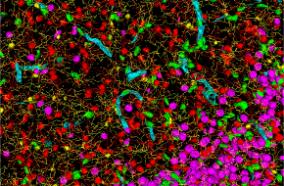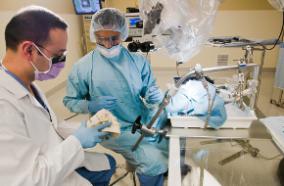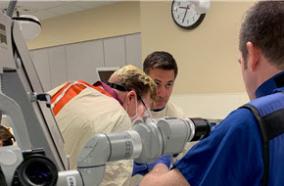Middle Meningeal Artery Embolization for Chronic Subdural Hematoma: A Multi-Center Experience of 154 Consecutive Embolizations.
Middle Meningeal Artery Embolization for Chronic Subdural Hematoma: A Multi-Center Experience of 154 Consecutive Embolizations.
Neurosurgery. 2020 Oct 07;:
Authors: Kan P, Maragkos GA, Srivatsan A, Srinivasan V, Johnson J, Burkhardt JK, Robinson TM, Salem MM, Chen S, Riina HA, Tanweer O, Levy EI, Spiotta AM, Kasab SA, Lena J, Gross BA, Cherian J, Cawley CM, Howard BM, Khalessi AA, Pandey AS, Ringer AJ, Hanel R, Ortiz RA, Langer D, Kelly CM, Jankowitz BT, Ogilvy CS, Moore JM, Levitt MR, Binning M, Grandhi R, Siddiq F, Thomas AJ
Abstract
BACKGROUND: Middle meningeal artery (MMA) embolization has emerged as a promising treatment for chronic subdural hematoma (cSDH).
OBJECTIVE: To determine the safety and efficacy of MMA embolization.
METHODS: Consecutive patients who underwent MMA embolization for cSDH (primary treatment or recurrence after conventional surgery) at 15 centers were included. Clinical details and follow-up were collected prospectively. Primary clinical and radiographic outcomes were the proportion of patients requiring additional surgical treatment within 90 d after index treatment and proportion with > 50% cSDH thickness reduction on follow-up computed tomography imaging within 90 d. National Institute of Health Stroke Scale and modified Rankin Scale were also clinical outcomes.
RESULTS: A total of 138 patients were included (mean age: 69.8, 29% female). A total of 15 patients underwent bilateral interventions for 154 total embolizations (66.7% primary treatment). At presentation, 30.4% and 23.9% of patients were on antiplatelet and anticoagulation therapy, respectively. Median admission cSDH thickness was 14 mm. A total of 46.1% of embolizations were performed under general anesthesia, and 97.4% of procedures were successfully completed. A total of 70.2% of embolizations used particles, and 25.3% used liquid embolics with no significant outcome difference between embolization materials (P > .05). On last follow-up (mean 94.9 d), median cSDH thickness was 4 mm (71% median thickness reduction). A total of 70.8% of patients had >50% improvement on imaging (31.9% improved clinically), and 9 patients (6.5%) required further cSDH treatment. There were 16 complications with 9 (6.5%) because of continued hematoma expansion. Mortality rate was 4.4%, mostly unrelated to the index procedure but because of underlying comorbidities.
CONCLUSION: MMA embolization may provide a safe and efficacious minimally invasive alternative to conventional surgical techniques.
PMID: 33026434 [PubMed - as supplied by publisher]



















